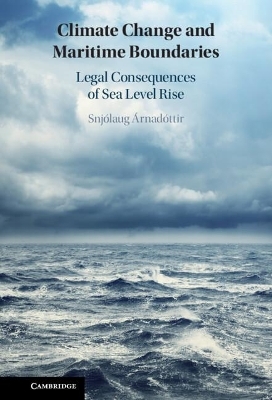
Climate Change and Maritime Boundaries
Legal Consequences of Sea Level Rise
Seiten
2021
Cambridge University Press (Verlag)
978-1-316-51789-5 (ISBN)
Cambridge University Press (Verlag)
978-1-316-51789-5 (ISBN)
The accelerating changes to the world's coastlines caused by climate change are affecting the law of the sea. Árnadóttir explains how the extent of national jurisdiction changes with receding coasts, how environmental changes threaten the stability of internationally settled maritime boundaries and how these adverse effects can be mitigated.
Coastal States exercise sovereignty and sovereign rights in maritime zones, measured from their coasts. The limits to these maritime zones are bound to recede as sea levels rise and coastlines are eroded. Furthermore, ocean acidification and ocean warming are increasingly threatening coastal ecosystems, which States are obligated to protect and manage sustainably. These changes, accelerating as the planet heats, prompt an urgent need to clarify and update the international law of maritime zones. This book explains how bilateral maritime boundaries are established, and how coastal instability and vulnerable ecosystems can affect the delimitation process through bilateral negotiations or judicial settlement. Árnadóttir engages with core concepts within public international law to address emerging issues, such as diminishing territory and changing boundaries. She proposes viable ways of addressing future challenges and sets out how fundamental changes to the marine environment can justify termination or revision of settled maritime boundaries and related agreements.
Coastal States exercise sovereignty and sovereign rights in maritime zones, measured from their coasts. The limits to these maritime zones are bound to recede as sea levels rise and coastlines are eroded. Furthermore, ocean acidification and ocean warming are increasingly threatening coastal ecosystems, which States are obligated to protect and manage sustainably. These changes, accelerating as the planet heats, prompt an urgent need to clarify and update the international law of maritime zones. This book explains how bilateral maritime boundaries are established, and how coastal instability and vulnerable ecosystems can affect the delimitation process through bilateral negotiations or judicial settlement. Árnadóttir engages with core concepts within public international law to address emerging issues, such as diminishing territory and changing boundaries. She proposes viable ways of addressing future challenges and sets out how fundamental changes to the marine environment can justify termination or revision of settled maritime boundaries and related agreements.
Snjólaug Árnadóttir is a Lecturer at Reykjavik University and member of the International Law Association Committee on International Law and Sea Level Rise.
Introduction; Part I. Law of the sea and the changing marine environment: Part II. Unilaterally declared maritime limits: Part III. Maritime delimitation and coastal instability: Part IV. Maritime delimitation and the marine environment: Part V. Fundamental change of circumstances: Part VI. Conclusion.
| Erscheinungsdatum | 29.11.2021 |
|---|---|
| Zusatzinfo | Worked examples or Exercises |
| Verlagsort | Cambridge |
| Sprache | englisch |
| Maße | 159 x 235 mm |
| Gewicht | 536 g |
| Themenwelt | Recht / Steuern ► EU / Internationales Recht |
| Recht / Steuern ► Öffentliches Recht ► Umweltrecht | |
| Recht / Steuern ► Öffentliches Recht ► Völkerrecht | |
| ISBN-10 | 1-316-51789-6 / 1316517896 |
| ISBN-13 | 978-1-316-51789-5 / 9781316517895 |
| Zustand | Neuware |
| Haben Sie eine Frage zum Produkt? |
Mehr entdecken
aus dem Bereich
aus dem Bereich
wichtige Gesetze und Verordnungen zum Schutz von Umwelt und Klima
Buch | Softcover (2024)
dtv Verlagsgesellschaft
21,90 €
mit Verordnungen, Verpackungsgesetz, Elektro- und …
Buch | Softcover (2024)
dtv Verlagsgesellschaft
19,90 €


